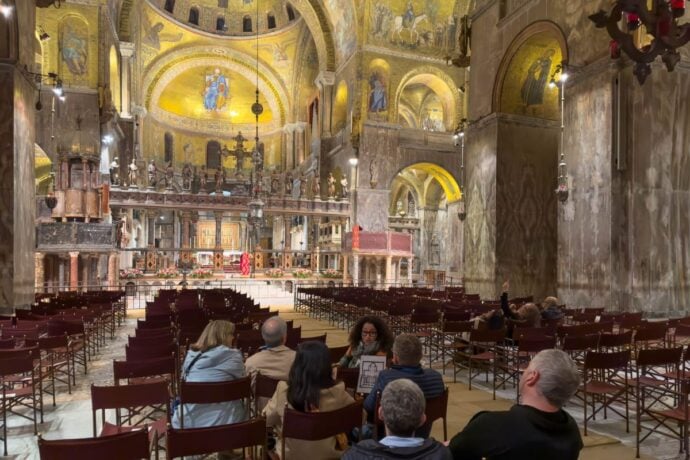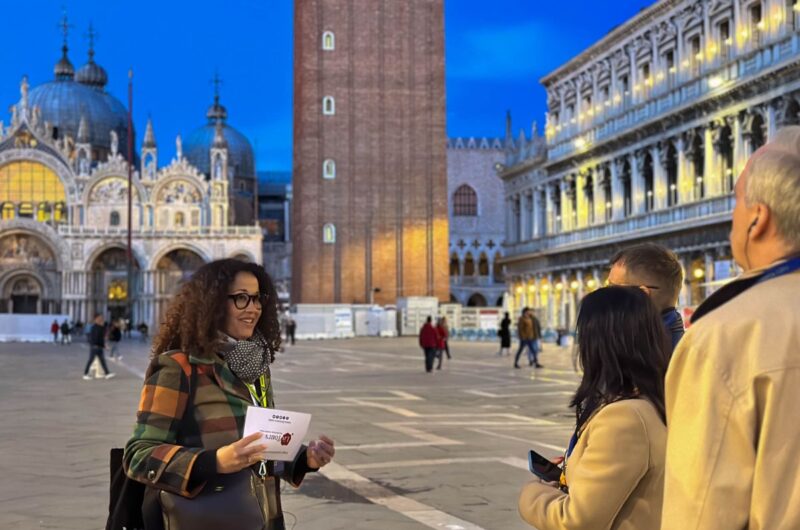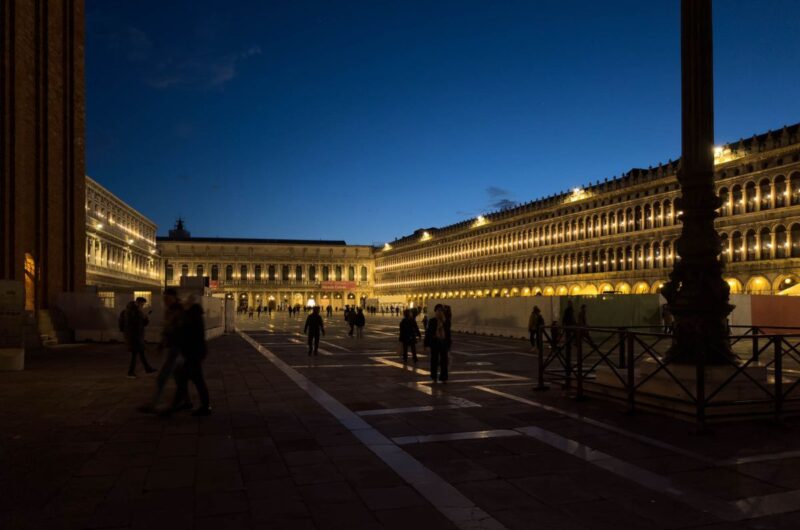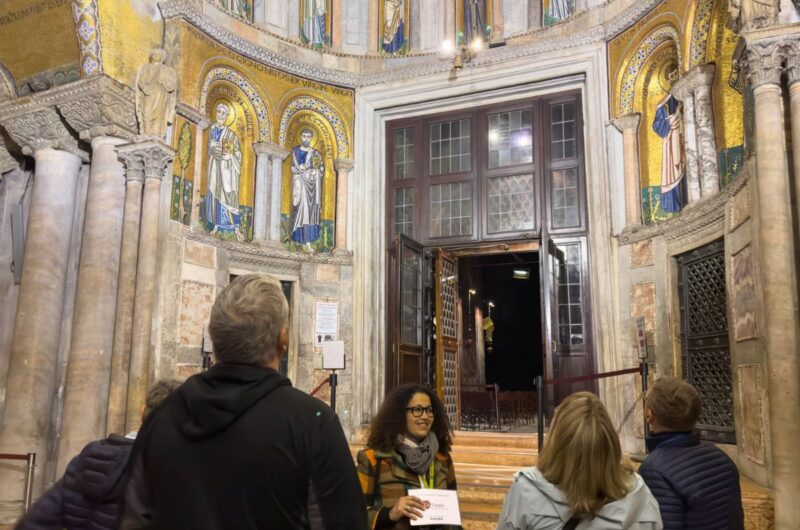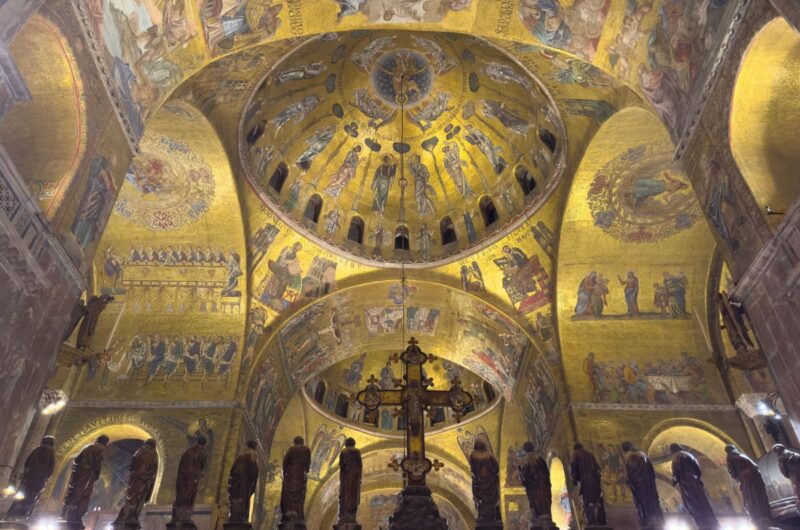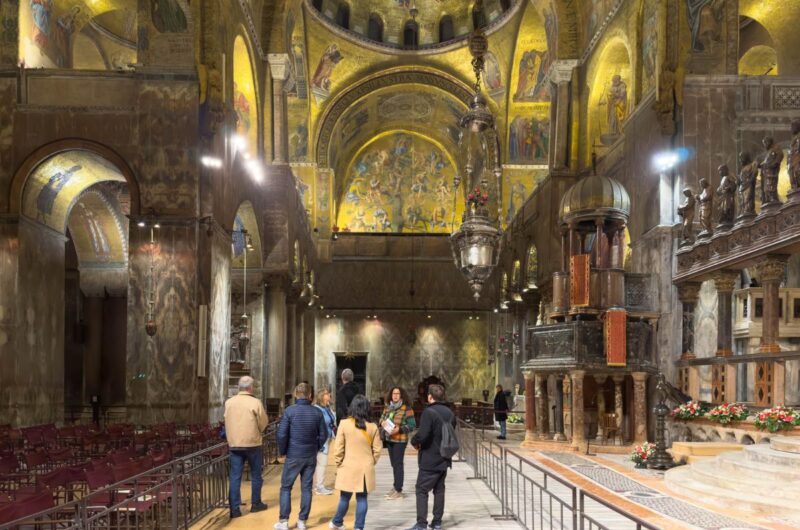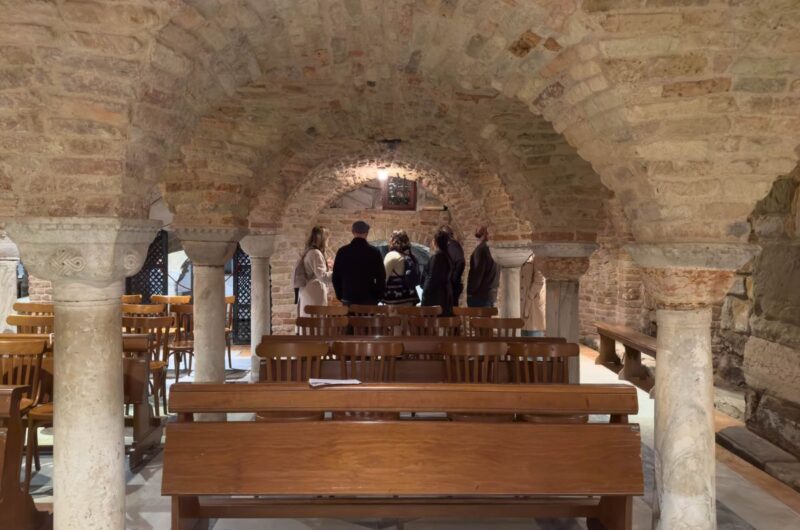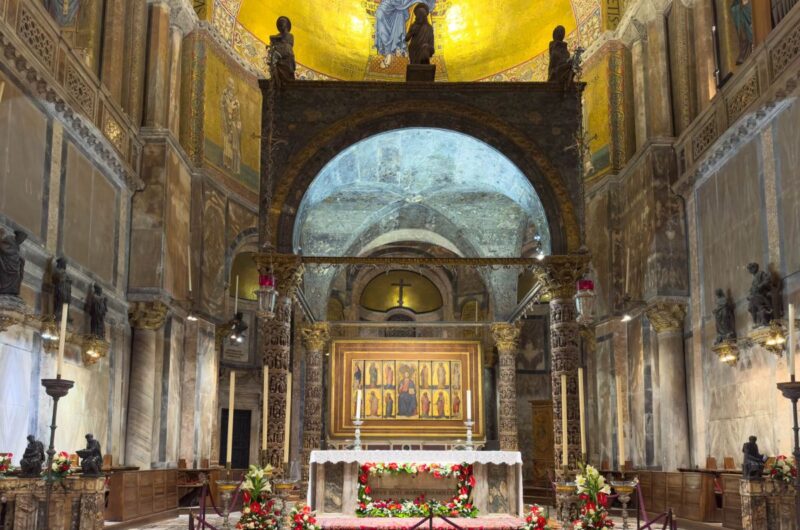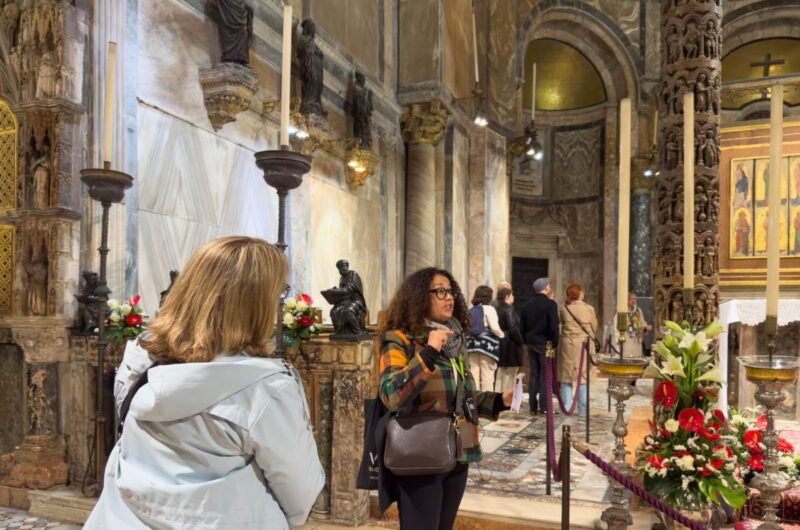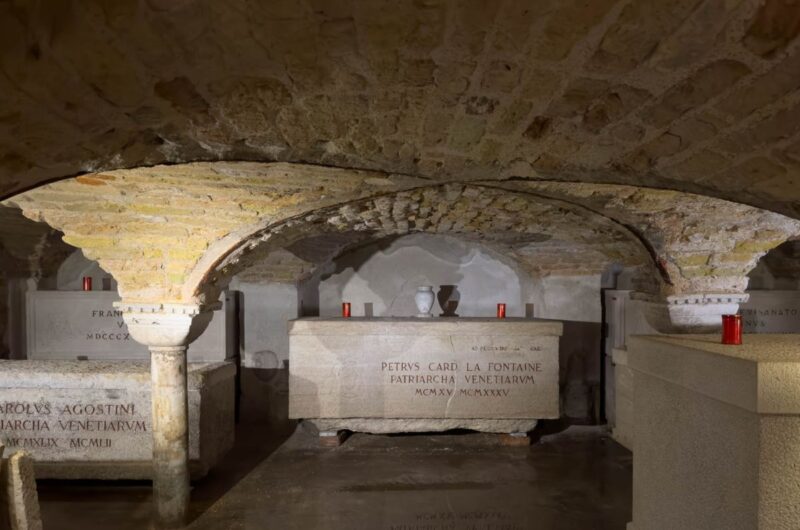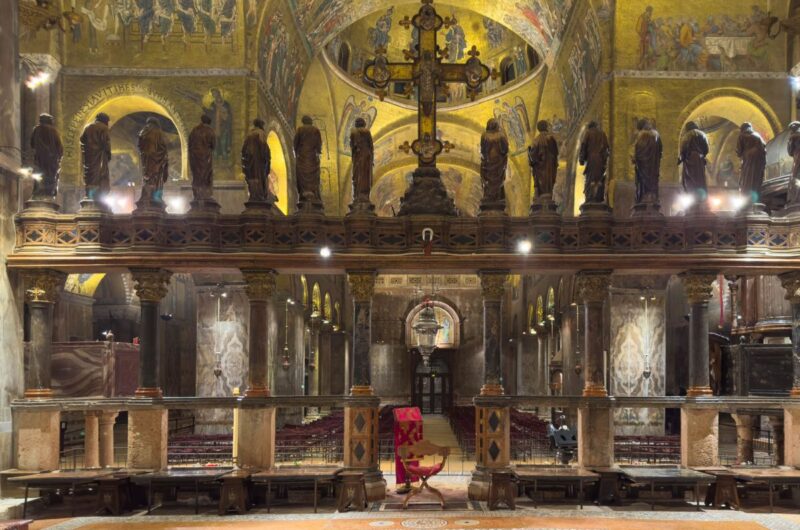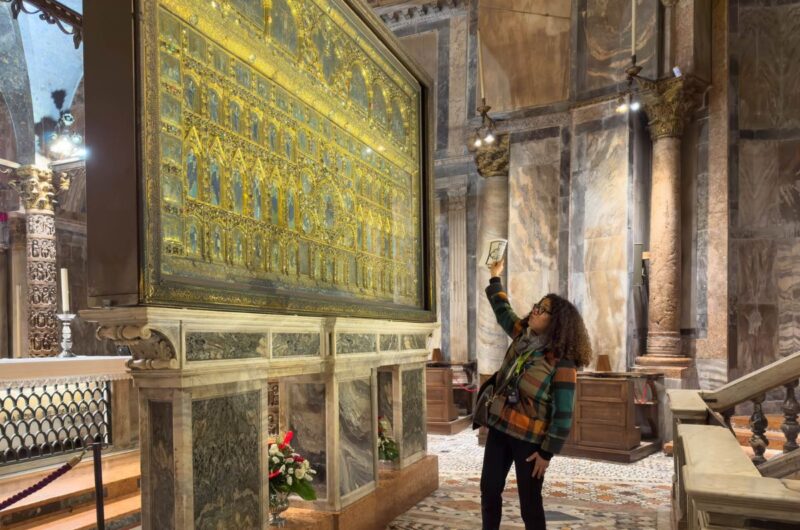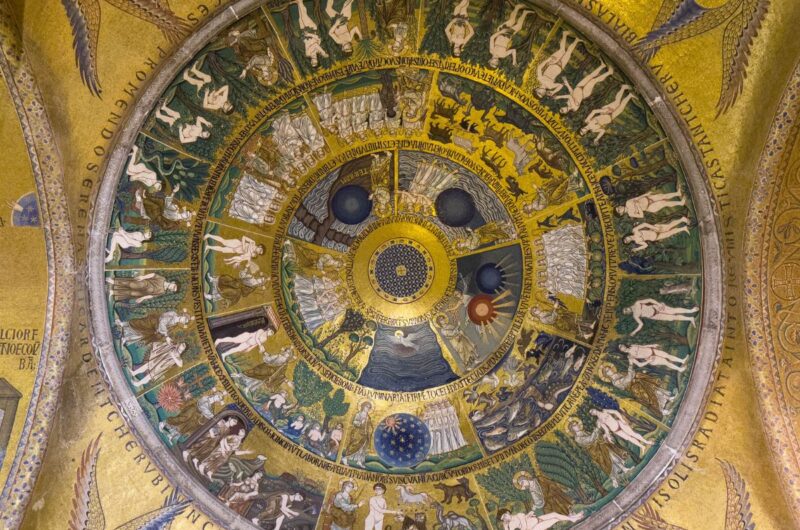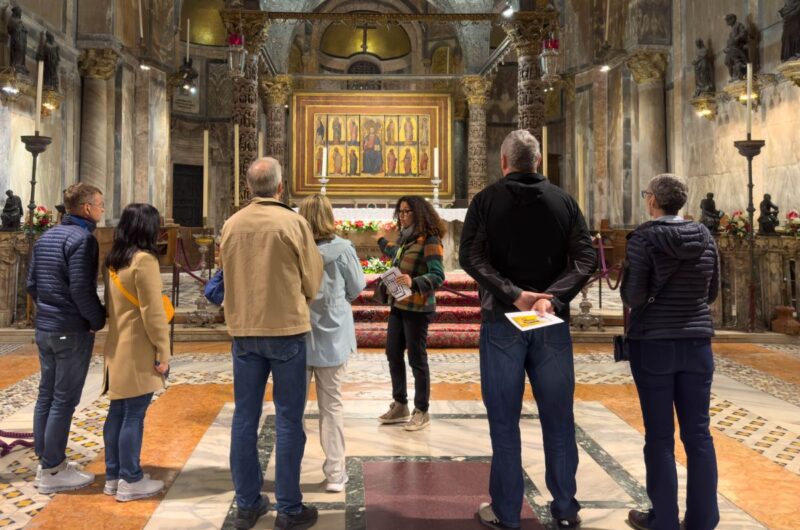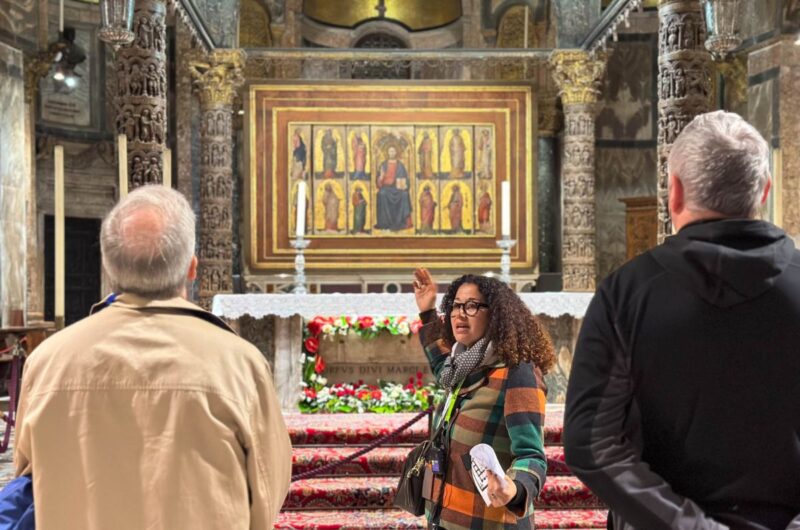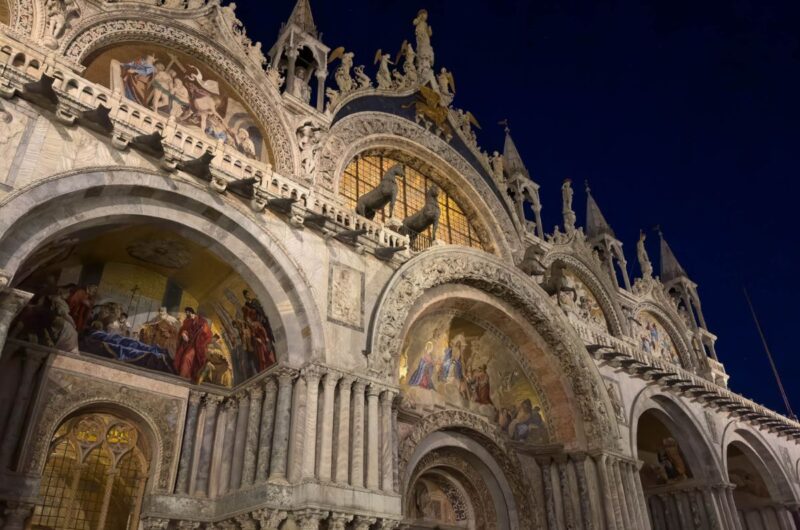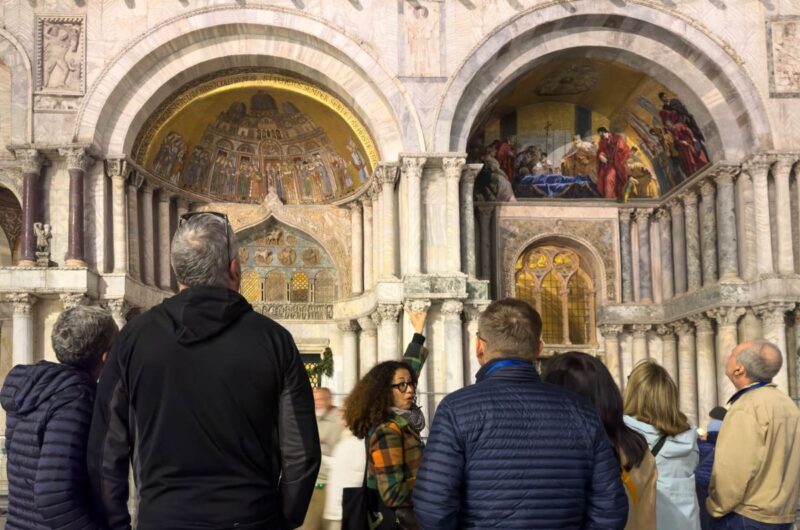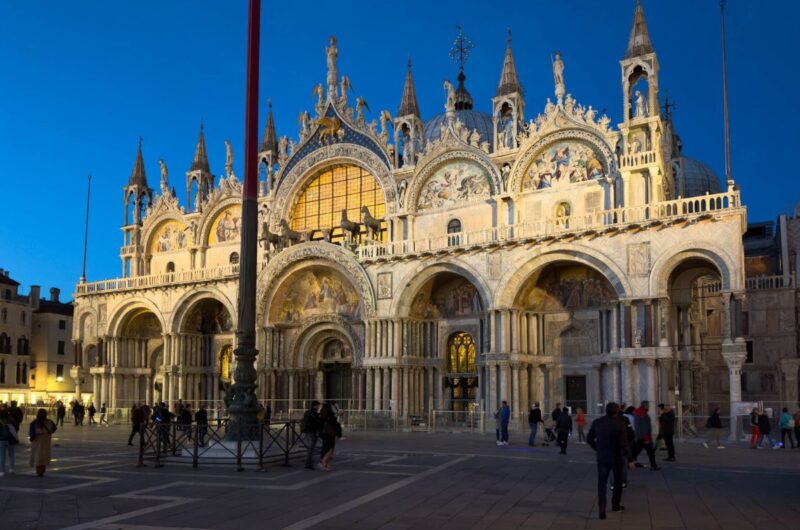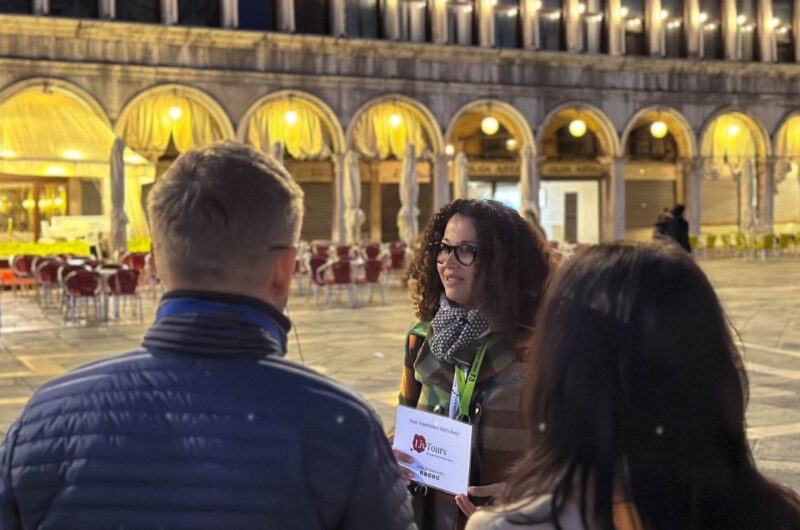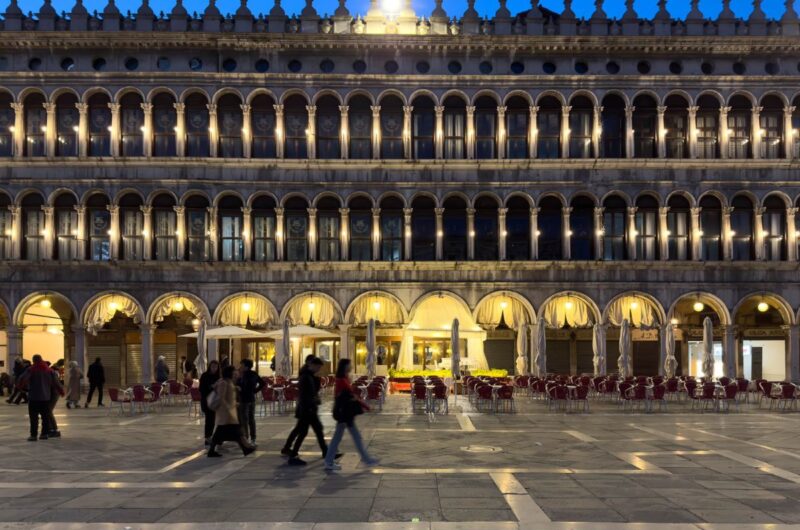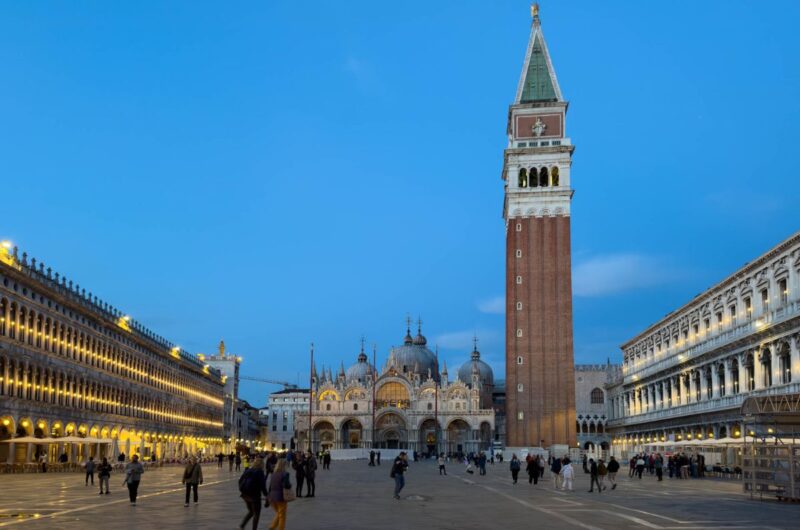Your LivTours’ St. Mark’s Basilica at Night Tour meets in the heart of Venice, St. Mark’s Square. Your guide will share the history and stories behind the important landmarks located in the city’s largest square as well as some background on this enchanting floating city itself. Before going inside, you will admire this masterpiece of Byzantine architectural style and understand why this 11th-century cathedral came to be called the “Golden Church”.
After exploring this fascinating square, you will be escorted inside of St. Mark’s Basilica. As the lights are methodically illuminated upon entry, you will be immediately struck by the glow from the more than 4,000 square meters of golden mosaics. Absorb everything around you, for this is really a chance that few visitors ever have the opportunity to have. Thousands of square feet of mosaics depicting both old and new testament stories are visible for you to view, without crowds and other obstructions. Your guide will take you through the key themes to orient you as you wander through this immense site.
One of the highlights of St. Mark’s that will be accessible during your evening visit is the renowned Pala d’Oro – the most famous high altarpiece. This relic is incredibly important to the history of this church in part because it has remained undisturbed in its original place for so many centuries. An unmistakably priceless artifact, this golden altarpiece features gold and several thousands of pieces of precious gems and stones. The origin of this piece lends itself to the mystic and the significance of this normally crowded tourist attraction. Appreciate it fully in a way that is rarely afforded during this visit.
Enter areas typically off-limits such as the Basilica’s underground crypts. Learn the story behind the ancient crypts and how they have come to survive centuries of flooding. Whose remains are here and how is this space reserved and maintained?
LivTours’ Night Tour of St. Mark’s Basilica is an absolute must for travelers with a real desire to experience sites in their most tranquil, natural state.


